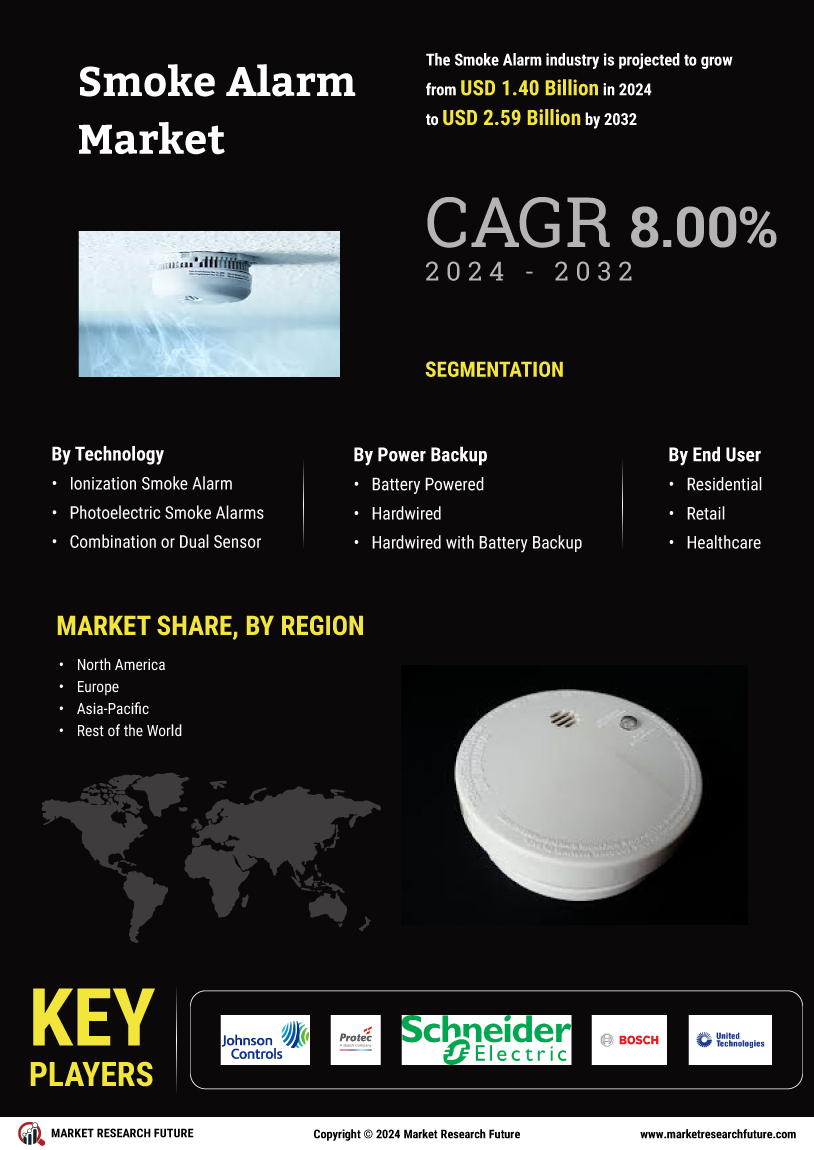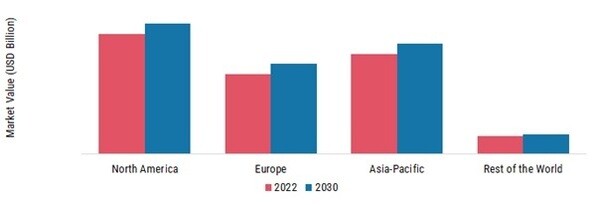Smoke Alarm Market Summary
As per Market Research Future Analysis, the Global Smoke Alarm Market was valued at USD 1.30 Billion in 2023 and is projected to grow to USD 2.59 Billion by 2032, with a CAGR of 8.00% from 2024 to 2032. The growth is driven by the increasing installation of smart smoke alarms in residential units, enhancing property value and safety. Technological advancements, such as the shift from ionization to photoelectric systems, and integration with other safety systems are also contributing to market expansion. The residential segment dominates the market, fueled by heightened awareness of fire safety and smart home adoption. Regionally, Asia-Pacific is expected to exhibit the highest growth due to rapid urbanization and construction activities.
Key Market Trends & Highlights
Key trends driving the smoke alarm market include technological advancements and increased safety awareness.
- Market Size in 2023: USD 1.30 Billion; projected to reach USD 2.59 Billion by 2032.
- CAGR of 8.00% during the forecast period (2024 - 2032).
- Photoelectric smoke alarms held the majority market share in 2022.
- Battery-powered smoke alarms dominated the power backup segment in 2022.
Market Size & Forecast
| 2023 Market Size | USD 1.30 Billion |
| 2024 Market Size | USD 1.40 Billion |
| 2032 Market Size | USD 2.59 Billion |
| CAGR | 8.00% (2024 - 2032) |
Major Players
Major players include Johnson Controls Inc, Protec Fire Detection PLC, Schneider Electric, Robert Bosch GmbH, United Technologies Corporation, Nest Labs, Siemens AG, Legrand, Newell Brands, Halma Plc, Hochiki Corporation, Honeywell International, Secom Co., Ltd, Minimax Viking GmbH, Gentex, Schrack Seconet AG, NEC Corporation, and Ceasefire Industries Pvt. Ltd.

 Source: Secondary Research, Primary Research, MRFR Database and Analyst Review
Source: Secondary Research, Primary Research, MRFR Database and Analyst Review